#General Curtis LeMay
Explore tagged Tumblr posts
Text
Remember this name...
Yoav Gallant.
He speaks with a tone reminiscent of General Curtis LeMay.
#armchair political commentary#racist rhetoric is still racist no matter who it is aimed at#fight genoice#free palestine#yoav gallant#general curtis lemay#bombs away lemay
1 note
·
View note
Text
Aug 16, 1943 - Most of the day filled with alarms and excursions regarding the mission projected for tomorrow - general impression is both Zebra and Sunflower will be attacked tomorrow. Base on full alert, late in the day. Crew warned to prepare canteens, extra rations, arms, shelter halves, iron rations and other ominous articles. Afraid it is real.
Aug 17, 1943 (Regensburg) - Hunch was correct. The Group took off, maximum strength at 0730 hours on the long awaited shuttle trip to North Africa. Twenty-one (21) aircraft took off - Major Kidd leading, Major Egan second in command, Major Cleven and Major Veal led their Squadrons. A good many eggs in one basket. The Bombardier and Navigator had been studying the target for week, but did not know its name or location until the briefing. Objective was characterized in the annex to the Field Order as "The most important ever bombed anywhere." Entire station is sweating this one out - Doris Flesson back on the field with Walter Logan of UP to interview the crews when they return - expected in three days.
Aug 18, 1943 - No new directly from our Combat Crews. Bomber Command has word from Colonel Curtis LeMay, who led mission, that the target was destroyed - we know that the boys got to the target and LeMay's plane at least reached North Africa. Rumor that about 115 Fortresses were safely on the ground, seven in the Mediterranean Sea and two on Switzerland. Today our seven remaining crews took off to raid Dutch airports. Interrogation was interrupted to show crews photos, just received, of what the boys did at Regensburg - it was blasted to Hell and Gone. ME assembly plant in shambles - about a square mile of ruins. Photos show the Red Cross Hospital on the edge of the target area untouched - testifying to the accuracy of our bombing. The 100th MPI (Mean Point of Impact) obliterated. If our crews return safely it will have been a great mission for us any case will go down as one of the great air exploits of the war.
Aug 20, 1943 - Still sweating out our Combat Crews - no hint as to when they will return. Operations hasn't heard a word, although higher headquarters may have. Not a hint as to individual Group losses.
Aug 21, 1943 - Terrific rainstorm during the night - a regular Texas dew. Still overcast and raining this morning, so boys will probably won't get home today. Note: Officers mess profited indirectly by this mission. Combat Crew mess was unable to refrigerate their consignment of eggs - lowly Paddlefeet at eggs like gentlemen.
Aug 22, 1943 - Today is black, though memorable day for the 100th. Colonel Harding flew to Prestwick, where Major Egan and crew of Scott’s and Wolff’s planes were flown by ATC from North Africa. The 100th Bomb Group lost nine (9) planes in what may turn out to be the greatest aerial battle of the war. We lost Hollenbeck, Claytor, Hummel, Braley all of the 350th: Van Noy and Shotland of the 349th, Oakes of the 351st and Knox and Biddick of the 418th. Fighting lasted from Antwerp to the target – 2 hours and 10 minutes – with every type of fighter the Jerries could get up…
— entry’s from the diary of Marvin “Red” Bowman, Group Intelligence Officer of the 100th BG
#note the ‘bombardier and navigator’ from Aug 17 are Crosby and Douglass :)#any grammar mistakes are Red’s own#Regensburg#(at least I’m pretty sure)#masters of the air#real mota#red bowman’s diary#red bowman#marvin bowman#mota#Africa shuttle mission#quotes#diary#buck cleven#bucky egan#john egan#gale cleven#jack kidd#today is black#<- that line goes hard (in a good way but like for bad reasons)#This is long I’m sorry
15 notes
·
View notes
Text

After test flights of the A-12 at Area 51, which was way above sea level in Nevada, it was decided that the Blackbird should be taken to Orlando, Florida For further testing. They wanted to see how she flew at sea level.
They wanted to know if there would be any problems before they flew the A-12 over to Kadena, Okinawa, for its first deployment,
There were problems, but that’s another story.
Paul Crickmore‘s book “ Lockheed Blackbird Beyond the Secret Missions.” Paul talks about the reaction to the public's first look at this “science fiction-looking jet.” Passenger planes at the Airport in Orlando, Florida, could see the A-12 takeoff.
Can you guess what happened next?
All of the passengers rushed to the other side of the airplane, causing a noticeable dip in one side of that passenger airplane.😳
The A-12 remained top-secret until around 1992 When there was a freedom of information act ongoing .The YF 12 and the SR 71 were both announced by President Lyndon Johnson in 1964 but they were rarely seen at a public airport, and it was hard for anyone to decipher one Blackbird from another. It’s still hard to do that today.
President Johnson announced an A11, which technically did not exist. He mentioned that several A1 1 aircraft were being flight tested at Edwards Air Force Base in California. This announcement was made on February 29, 1964. To back up a Presidental announcement, two of the three YF-12 aircraft, 934 and 935, were positioned at Edwards Air Force Base by Lou Schalk and Bob Gilliland
Lou remembers taxing into the assigned hangar as eyes bulged and head shook and utter disbelief at the site of two sleek aircraft that had never been seen before by anyone outside the program, except possible desert dwellers and incredulous airline crews. Lou continues to explain our supposed low-key, rather laid-back positioning flight lost a touch of elegance when to aid in push-back into the hangar. We turn the aircraft 180° at the entrance. This turnaround maneuver sent hot engine exhaust gases into the hangar, which caused the overhead fire extinguisher valves to open. These valves were like a big flood on the hangar decks of airline carriers. The desert hadn’t seen so much water since Noah’s embarkation!
The SR 71 had not flown Its first flight, yet, it would not occur until December 22,1964.
President Johnson made another announcement on July 25, 1964 in reaction to Senator Berry Goldwater, saying that Johnson had neglected the defense needs of America, this was during a Presidential election,. He retaliated with the announcement of an airplane that had not even flown yet. The SR-71.
In case you didn’t know President Johnson became president when John Kennedy was assassinated on Nov 22, 1963. He was elected on his own accord in 1964. He refused to accept the nomination in 1968 for the Presidency. Although the aftermath of the Vietnam war chances are he would not have been asked to be the Democratic nominee.
SR 71 pilot and author Rich Graham investigated the rumor that President Johnson had misspoken when he said SR 71. The rumor… It’s simply not true. The President said SR 71. It was written RS 71 in the notes for the press release . General Curtis LeMay had decided that he liked the sound of SR 71 better. The four-star General changed the name from RS to SR! Any of the Blackbird books by Paul Crickmore or Rich Graham I would high recommend if you’d like to know more about the SR 71 program.
written by Linda Sheffield
@Habubrats71 via X
13 notes
·
View notes
Text
While exposing the dangers and dilemmas of deterrence theory, Kubrick also satirized contemporary military figures and strategists, probably including Henry Kissinger, the author of Nuclear Weapons and Foreign Policy (1957); physicist Edward Teller, the “father” of the H-bomb; the ex-Nazi space scientist Wernher Von Braun; and the bombastic, cigar-chomping SAC commander Curtis LeMay, who in 1957 had told a government commission assessing U.S. nuclear policy that, if a Soviet attack ever seemed likely, he planned to “knock the shit out of them before they got off the ground.” Reminded that U.S. policy rejected preemptive war, LeMay had retorted, “No, it’s not national policy, but it’s my policy.” Much of the strategic thinking that Kubrick critiques, and even some of the dialogue in “Dr. Strangelove,” came from the work of Herman Kahn of the RAND Corp., an Air Force-funded California think tank. Kubrick read Kahn’s work carefully, especially his influential On Thermonuclear War (1960). General Turgidson’s upbeat assessment of the outcome of an all-out nuclear exchange directly paraphrases Kahn’s analysis.
Paul S. Boyer in a 2004 essay at Arms Control Association. "Dr. Strangelove" at 40: The Continuing Relevance of a Cold War Cultural Icon
12 notes
·
View notes
Text
The Many World War II References in Thracia 776
At this point, it's largely known that several bosses encountered in Fire Emblem: Shadow Dragon were named after infamous military figures from World War II. Much less spoken of are the references to not only members of N*zi Germany, but important faces from this period around the globe. Do note that due to circumstances I've had to censor various keywords (though I'm sure I managed to miss some), so you have my apologies if this wasn't immediately accessible, or if the odd asterisk here and there is troublesome.
Starting with Chapter 1's Weismann (JP: ワイズマン; rōmaji: waizuman), tasked by Raydrik to capture Leif in Fiana. He likely takes his name from Chaim Weizmann, written in Japanese as ハイム・ヴァイツマン (rōmaji: haim vaitsuman) or カイム・ワイズマン (rōmaji: kaim waizuman). Weizmann was a Jewish biochemist from R*ssia, but went on to be the president of the World Zionist Organization, which sought to establish a homeland for the Jewish people in the borders of the Biblical Land of Israel. He would work alongside British Prime Minister Winston Churchill throughout both World Wars. When the State of Israel was formed in 1948 after conflicts with the Palestinians who call the land home, Weizmann would become the first Israeli president.
Tolman (JP: トルーマン; rōmaji: torūman) is the boss of Chapter 6, leading a battalion in Munster. He is named after United States President Harry Truman (ハリー・トルーマン; rōmaji: harī torūman), who took presidency after the passing of Franklin Roosevelt towards the end of World War II. Truman is best known for his authorization of the use of nuclear warheads on Japan.
Chapter 7's boss is named Eisenhau (JP: アイゼナウ; rōmaji: aizenau), rather obviously named after the subsequent president of the United States following Harry Truman, Dwight D. Eisenhower (ドワイト・D・アイゼンハワー; rōmaji: dowaito D aizenhawā). Before his presidency, Eisenhower held the role of Supreme Commander of the Allied Expeditionary Force in World War II, having planned out Operation Torch and Operation Overlord.
Lemay (or Rumaigh, depending on the translation), is a Thracian Wyvern Knight working with the Violdrake Bandits in Chapter 8. His Japanese name, ルーメイ (rōmaji: rūmei) comes from United States Air Force general Curtis LeMay (JP: カーチス・ルメイ; rōmaji: kāchisu rumei), who was involved in arranging the bombing tactics in the Pacific Theater of World War II, including Operation Starvation - dumping naval mines around major Japanese ports to cut off shipping - and the dropping of the atomic bombs on Hiroshima and Nagasaki.
Oltoph (JP: オル���フ; rōmaji: orutofu) is a bishop serving under Kempf encountered in Chapter 11x. He likely is named after Soviet Secret Police member Alexander Orlov (JP: アレクサンドル・オルロフ; rōmaji: arekusandoru orurofu). Orlov was given a major directing role over Soviet involvement in the Spanish Civil War, serving as a liaison to the Spanish Republican faction and weeding out any amongst them that thought to challenge Joseph St*lin and the Soviets. He would continue his policing duties during the Great Purge, arresting and executing those internally viewed as a threat to St*lin's reign. When Orlov’s own friends ended up in the state’s firing line, he abandoned the Soviet Union and brought his family to Canada, a threat of leaking many of the country’s illegal operatives protecting him. Strengthening this reference is how Oltoph, more or less sentenced to death to allow Kempf's escape, will dart for an escape tile after 30 turns.
Chapter 14's boss is a Baron of Friege named Paulus (JP: パウルス; rōmaji: paurusu), who is tasked with the capture of Tarrah. He is named after Friedrich Paulus (JP: フリードリヒ・パウルス; rōmaji: furīdorihi paurusu) a German field marshall best known for his role in the Battle of Stalingrad. In what would be Germany's last push to invade the Soviet Union, the R*ssian city of Stalingrad would be largely demolished and held by the Axis powers with little threat until winter's approach, when the Soviets took advantage of the Germans' lack of preparedness. The German front would be pushed further and further back until the remaining Sixth Army - the most highly decorated army of the Wehrmacht - was surrounded in the city. After a failed rescue attempt, the highest-ranked soldier remaining in the Sixth Army, Friedrich Paulus was promoted to the rank of field marshal over radio by Adolf H*tler himself. His orders were to either withstand the Soviets for an indefinite length of time or to take their own lives before capture. Nonetheless, Paulus would soon allow himself and his men to be captured, and would just as quickly grow vocal with his disdain for his homeland; he even would be a witness of the Nuremberg Trials.
The scenario of Chapter 14, with Leif, the Liberation Army, and the people of Tarrah being completely surrounded by Imperial forces, has apparent similarities to the position the Sixth Army was in during the Battle of Stalingrad. Similarly, the character of Paulus showing uncertainty in his actions and the commands of Bloom may be based upon Friedrich Paulus' statements against Germany following his capture.
McCloy (JP: マクロイ; rōmaji: makuroi) is a Wyvern Knight of Thracia ordered by Travant to capture Tarrah after the Imperial forces are worn from their siege. He is named after John J. McCloy (JP: ジョン・J・マクロイ; rōmaji: jon J makuroi), an American lawyer and presidential adviser to every United States president from FDR to Ronald Reagan. During World War II he served as Assistant Secretary of War, as which he was one of the major decision-makers in putting Japanese-Americans in internment camps. He also tried to convince President Truman that, based on intercepted messages, that by providing terms of surrender to Japan that would maintain their monarchy, with the threat of nuclear bombs if not accepted, they would ensure the war's end - a sentiment rejected, as the warheads would be dropped as soon as they were completed without any negotiations.
Chapter 14x's Eichner may be one of the most infamous named bosses in Thracia 776. In Japanese, his name is アイ���マン (rōmaji: aihiman) from Adolf Eichmann (アドルフ・アイヒマン; rōmaji: adorufu aihiman), one of the most infamous Schutzstaffel members. He was a lead organizer of the H*l*caust, assigned to the management of deporting Jewish people to extermination camps en masse. Given the chapter Eichner is found in features a city's entire population relocating due to being driven out by the empire, the connections are clear.
In the Project Exile fan translation preceding the current Lil' Manster translation, Eichner's name was radically changed to Arendt. This change was intended to remove a reference to such a deplorable man, replacing it with an allusion to Hannah Arendt, a Jewish historian who thoroughly recorded the trial of Eichmann, documented in her book Eichmann in Jerusalem. However, this change was largely seen as a haphazard choice, especially when the character works alongside the blatantly evil cultists and the replacement name was that of a good-natured historian and philosopher.
Mueller (JP: ミュラー; rōmaji: myurā) is a Mage Knight of the Gelb Ritter fought outside the gates of Leonster in Chapter 17A. He likely is named after Heinrich Müller (JP: ハインリヒ・ミュラー; rōmaji: hainrihi myurā), chief of the Gestapo during World War II who worked closely with Heinrich Himmler and Reinhard Heydrich since the days of the Weimar Republic. He had a major role in the organization of the H*l*caust, stated by Eichmann to have been in constant contact regarding the deportation of Jews. He was never found after H*tler's death, making him the highest-ranked N*zi to have never been confirmed captured or dead.
Found in the same chapter is the Dark Bishop Moore (JP: ムーア; rōmaji: mūa). Based on Mueller's namesake, Moore may be named after Robert Mohr, one of the Gestapo's interrogation specialists, primarily known for his work searching for the White Rose, a non-violent resistance group. However, there is little to support this claim beyond both possible figures being members of the Gestapo.
Gustav (JP: グスタフ; rōmaji: gusutafu) is a baron from Grannvale who serves as an advisor to Bloom and is entrusted to Leonster Castle. Unlike most other names derived from World War II era Germany, Gustav seems to pull from an infamous man's first name, rather than surname: Gustav Wagner (JP: グスタフ・ワーグナー; rōmaji: gusutafu wāgunā) was an Austrian staff sergeant and the most feared personnel at Sobibor extermination camp. He was deputy commandant at Sobibor, assigned to many daily interactions with the inmates. Reports from survivors assert that he was highly violent, beating and killing without reason. He was so brutal and claimed so many lives that Heinrich Himmler stated that he was "one of the most deserving men of Operation Reinhard".
Fire Emblem's Gustav is clearly displayed as a cruel man, having no qualms with the Loptrians' child hunts and imprisoning the loved ones of his knights who defected from Leonster to ensure they obey him. With how infamous the prison break of Chapter 18 is, it wouldn't be a surprise if it was inspired by Wagner's role at the extermination camp.
Chapter 19's boss is Wolfe (JP: ウォルフ; rōmaji: worufu), a baron serving Bloom in the defense of Ulster. He likely is named after Karl Wolff (JP: カール・ヴォルフ; rōmaji: kār vorufu), Chief of Personal Staff Reichsführer-SS - personal adjutant of Heinrich Heimler - and liaison to Adolf H*tler. He later became the Supreme SS and Police Leader, and worked on Operation Sunrise to surrender Germany after the death of H*tler.
Cohen (JP: コーエン; rōmaji: kōen) is the grandfather of Saias and fought alongside Reinhardt at the River Thracia. He may be named after Albert Cohen (JP: アルベール・コーエン; rōmaji: arubēru kōen), a Jewish writer and diplomat who worked in France before Germany's occupation. He was part of the Zionist movement, worked alongside Chaim Weizmann, and was both the representative of Zionism in the League of Nations and part of the UN's International Labor Organization. Throughout and after World War II, Cohen worked to unite governments in exile and aided in the transport of Jews fleeing Germany, advising refugee committees from France, Britain, and the U.S.
Alphand (JP: アルファン; rōmaji: arufan) is a bishop of the Loptr Church that protects Munster Castle in Chapter 23. He likely is named after Hervé Alphand (JP: エルヴェ・アルファン; rōmaji: eruve arufan), the economic advisor to Charles de Gaulle, leader of the Free France movement after Germany invaded France.
Lastly, both Kempf and Reinhardt are named after German officers during World War II. They have their own post, found here.
And as a bonus: even one of the unused characters found in the game's files gets his name from this time period: Speer (JP: シュペール; rōmaji: shupēru) is named after Albert Speer (JP: アルベルト・シュペーア; rōmaji: aruberuto shupēa), Minister of Armaments and War Production in Germany and part of H*tler's inner circle.
8 notes
·
View notes
Text

1945 02 Final assault - Stan Stokes
B-29 Superfortress 42-24625 from 498th BG, 875th Bomb Squadron Nose Art 'Lady Mary Anna'
The largest and most powerful bomber of WW II, the Boeing B-29 Super Fortress, played a major role in bringing about the defeat of Japan. In addition to accelerating Japans surrender following the bombing of Hiroshima and Nagasaki with atomic bombs, thousands of B-29 crews flew tens of thousands of bombing missions against Japan from bases in China, India, and later in the War from recaptured islands in the Pacific. B-29s entered service in 1943 following a lengthy, problem-filled, development process of three years in response to the governments request for a long range strategic bomber. Only Boeing and Douglas (the B-32 Dominator) responded to the governments requests, and the B-32 had even greater development problems than the B-29. Powered by four giant Wright R-3350-23 radial engines generating a total horsepower of 8,924, the Super Fortresses typically carried crews of ten. They were capable of a top speed of 357-MPH, and at slower cruising speeds had a range of more than 3,200 miles. The B-29 was a large aircraft for its time with a wingspan in excess of 140 feet and a length of just under 100 feet. The Super Forts also had pressurized forward and aft hulls, which made the long distance missions a bit more comfortable for the flight crews. B-29s typically carried defensive armament which included ten machine guns and a single tail-mounted canon. Because of the pressurized hull, the guns were operated by remote control. The first operational B-29 wing was the 58th which flew out of the China-Burma-India theater. On March 9, 1945 General Curtis LeMay ordered an unusual low altitude attack on Tokyo by hundreds of B-29s carrying incendiary bombs. Five such low level missions were scheduled over a ten-day period, and the combined destruction of these missions exceeded that of either of the atomic bomb missions. B-29s were also effectively used to mine Japanese ports and shipping lanes. The Kawasaki Ki-45 Toryu heavy fighter, which is depicted attacking the B-29 in Stan Stokes painting, entered production in 1941 following a lengthy four year development. About 1,700 of these aircraft, code named Nick by the allies, were produced. The Ki-45 never proved effective as a long range daylight interceptor. It was, however, used effectively in ground attack and night fighter roles. It was one of only a few Japanese aircraft that had some success against the onslaught of B-29s because it was able to attain the high altitudes necessary to intercept the high-flying Super Fortresses.
41 notes
·
View notes
Text

General Curtis LeMay
4 notes
·
View notes
Text
Air Force general Curtis LeMay, head of the strategic air command during the Korean War, estimated that the American campaign killed 20 per cent of the population.
Do you think that the Orange Dipshit knew this when he cozied up to North Korea? Because I bet Kim Jong Un did and was more than happy to use the idiot for his own purposes.
3 notes
·
View notes
Text


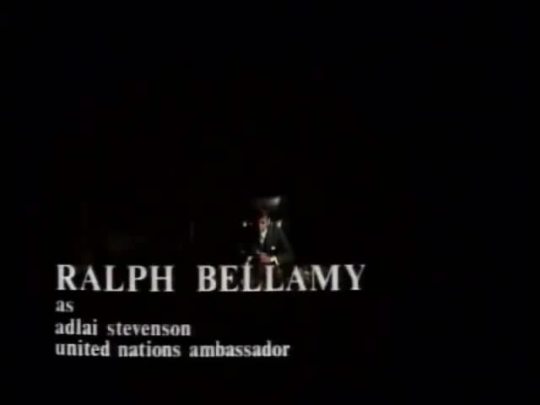



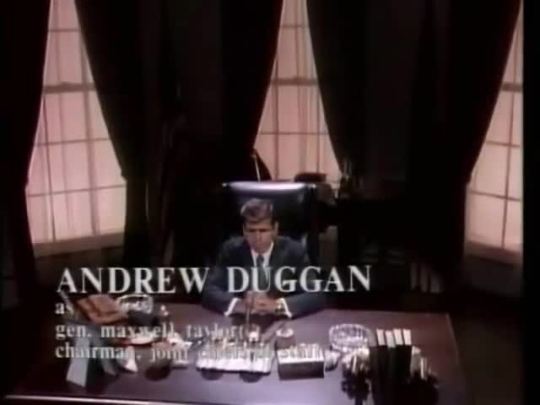
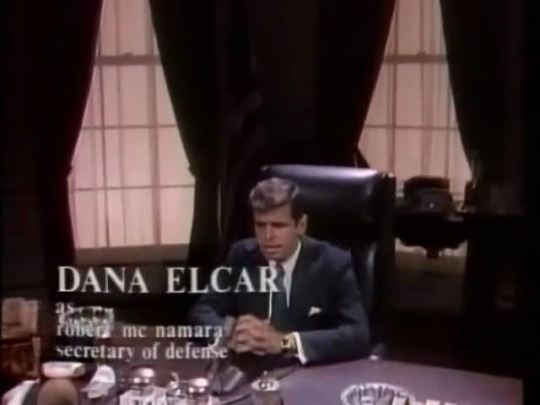
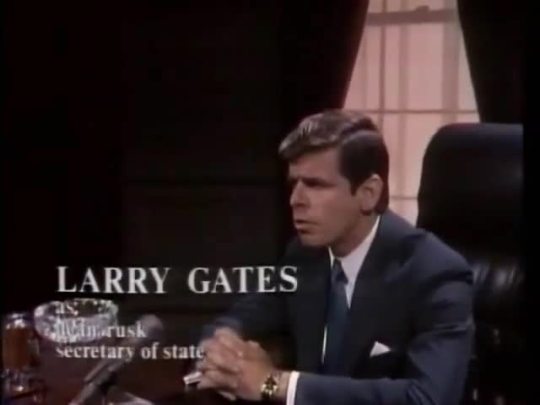




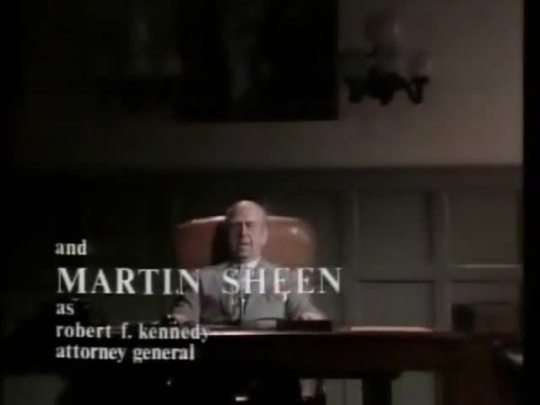
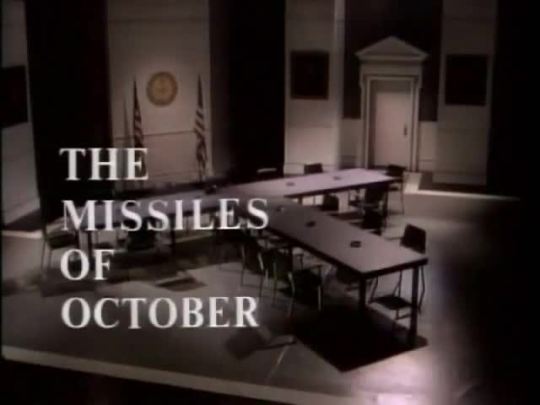
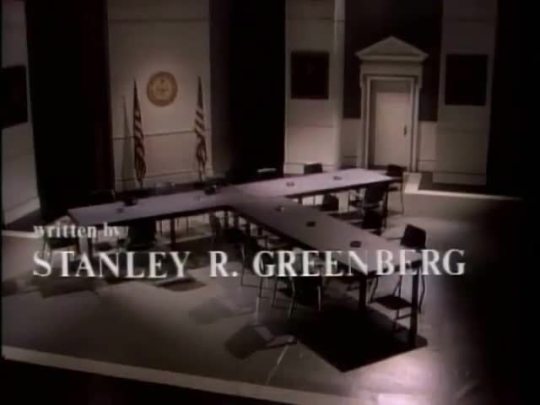
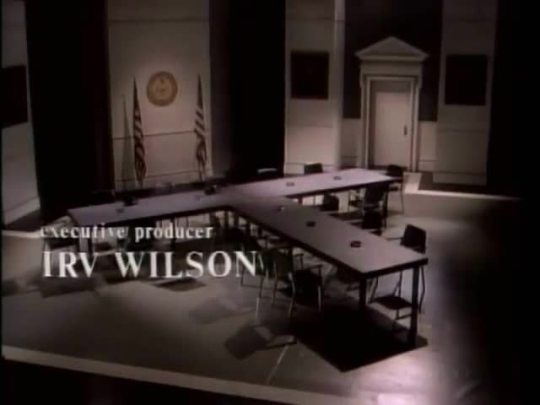
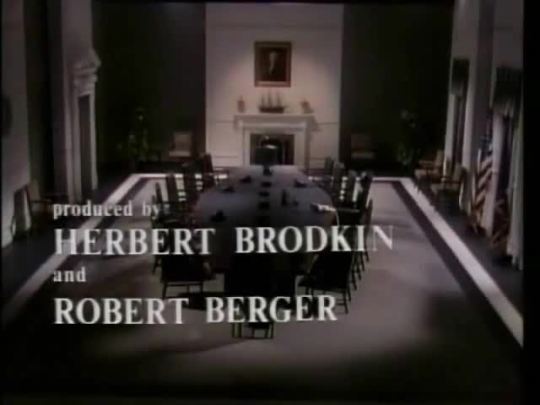

The Missiles of October - ABC - December 18, 1974
Docudrama
Running Time: 150 minutes
Stars:
Ralph Bellamy as Adlai Stevenson
Howard da Silva as Nikita Khrushchev
John Dehner as Dean Acheson
William Devane as John F. Kennedy
Andrew Duggan as General Maxwell Taylor
Dana Elcar as Robert McNamara
Larry Gates as Dean Rusk
James Olson as McGeorge Bundy
Nehemiah Persoff as Andrei Gromyko
William Prince as C. Douglas Dillon
John Randolph as George Ball
Martin Sheen as Robert F. Kennedy
Michael Lerner as Pierre Salinger
Clifford David as Theodore Sorensen
Albert Paulsen as Anatoly Dobrynin
Keene Curtis as John McCone,
Robert P. Lieb as Curtis LeMay
#The Missiles of October#TV#ABC#Docudrama#1974#Ralph Bellamy#Howard da Silva#John Dehner#William Devane#Andrew Duggan#Dana Elcar#Larry Gates#James Olson#Nehemiah APersoff#William Prince#John Randolph#Martin Sheen
6 notes
·
View notes
Text
Birthdays 11.15
Beer Birthdays
Grant Wood (1962)
Five Favorite Birthdays
J.G. Ballard; English writer (1930)
Daniel Barenboim; Argentinian-Israeli pianist & conductor (1942)
Georgia O'Keeffe; artist (1887)
Wayne Thiebaud; artist (1920)
Sam Waterson; actor (1940)
Famous Birthdays
Franklin Pierce Adams; journalist & author (1881)
Eusebius Amort; German poet (1692)
Edward Asner; actor (1929)
Gemma Atkinson; actor, model (1984)
Joanna Barnes; actress (1934)
Cynthia Breazeal; computer scientist (1967)
Kevin S. Bright; director (1954)
Carol Bruce; singer & actress (1919)
Mary E. Byrd; astronomer (1849)
Văn Cao; Vietnamese composer, poet & painter (1923)
Jimmy Choo; Malaysian fashion designer (1948)
Petula Clark; country singer (1928)
Gerry Connolly; Australian comedian & actor (1957)
Beverly D'Angelo; actress (1951)
Emma Dumont; actress and model (1994)
Tibor Fischer; English author (1959)
Gloria Foster; actress (1933)
Felix Frankfurter; U.S. Supreme Court justice (1882)
Judy Gold; comedian and actress (1962)
René Guénon; French-Egyptian philosopher (1886)
Arthur Haulot, Belgian journalist and poet (913)
Gerhart Hauptmann; German writer (1862)
William Herschel; German-English astronomer (1738)
Joe Hinton; singer (1929)
Rick Kemp; English singer-songwriter, bass player (1941)
Yaphet Kotto; actor (1937)
Emil Krebs; German polyglot (1867)
Johann Kaspar Lavater; Swiss poet & physiognomist (1741)
Virginie Ledoyen; French actress (1976)
Joe Leeway; English pop singer-songwriter (1955)
Curtis LeMay; air force general (1906)
Anni-Frid Lyngstad; pop singer (1945)
Mantovani; Italian composer (1905)
C.W. McCall; country singer (1928)
Clyde McPhatter; singer (1932)
Bill Melendez; Mexican-American animator & director (1916)
Jonny Lee Miller; English-American actor (1972)
Marianne Moore; poet (1887)
Kevin J. O'Connor; actor (1963)
Ol' Dirty Bastard; rapper and producer (1968)
Daniel Pinkwater; author & illustrator (1941)
William Pitt "the Elder"; English politician (1708)
Alvin Plantinga; philosopher (1932)
Seldon Powell; jazz saxophonist, flautist (1928)
Joseph Quesnel; French-Canadian poet, playwright & composer (1746)
Erwin Rommel; German field marshall (1891)
Randy Savage; wrestler (1952)
Madeleine de Scudéry; French author (1607)
Johannes Secundus; Dutch poet & author (1511)
Sacheverell Sitwell; English author (1897)
Antoni Słonimski; Polish journalist, poet & playwright (1895)
Randy Thomas; singer-songwriter, guitarist (1954)
Rachel True; actress (1966)
Joseph A. Wapner; television judge (1919)
James Widdoes; actor & director (1953)
Thomas Williams; author (1926)
Shailene Woodley; actress (1991)
1 note
·
View note
Text
0 notes
Text

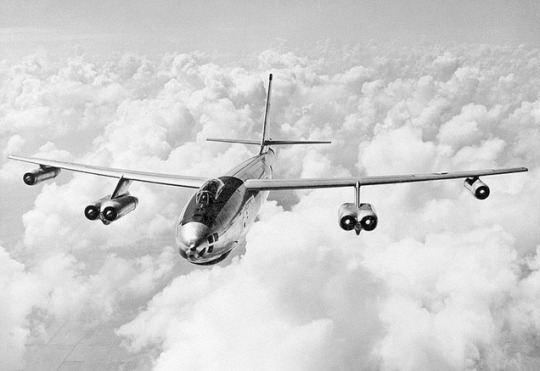

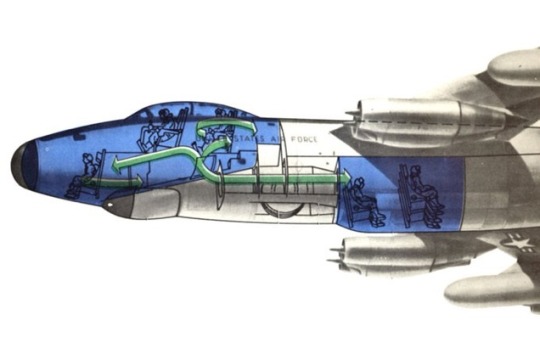
WHAT? No Ice Cream cone?
Before the U2 and the SR 71, the United States used the RB 47E and H. These brave men need to be appreciated for what they did. They risked their life over and over again.
Following its first flight on July 3, 1953, the RB-47E performed some of the most sensitive reconnaissance missions of the Cold War. During its service, at least two of these planes were lost flying missions over the Soviet Union. One incident involving an RB-47E occurred during a photographic mission over the Soviet Union. The plane was intercepted and fired upon by Soviet MiGs and sustained wing damage.
General Curtis LeMay, Chief of Staff of the Air Force, responded to the men telling him that the Soviets had attacked their airplane. ‘What do you do you expect them to do? Give you an ice cream cone🍦”
Fortunately, it could outrun them at altitude and return to base.
My father, Butch Sheffield, graduated from Cadets in 1955. He was selected to go to B-47 navigation bombardier school at Mather Air Force Base , CA. After graduating, he was assigned to Little Rock Air Force Base. Soon after, in January 1957, his squadron went to England to practice bomb runs. The next paragraph is from my father, Col. Richard “Butch” Sheffield's unpublish Book.
“My targets were in Russia and mostly air bases near large cities. I had to know the target so well that I could bomb it in my sleep. Every six months or so, we would change targets. I believe this was because more bombers and missiles were coming into the fleet, and the targets were reassigned to add them.
“We were briefed that if we had to bail out in Russia, we should dig a hole three feet deep, get in it, and wait till the war was over, then go to a safe area where we would be picked up U. S. Forces. This was hard for us to stomach, but we kept our mouths shut. My B-47 Aircraft Commander, Merle JeuDevine, was a real maverick. Our crew was selected by the SAC Inspector General (IG) to brief him on our war plan, and he asked us about how we would evade the enemy on the ground in Russia. He asked what we would do as soon as we arrived in Russia.
Merle told him that the first thing he would do was throw the cal. Thirty-eight handguns we carried as far as he could. The IG looked shocked. He said why? Merle said they would be looking for us with automatic weapons; we don’t stand a chance with that handgun. To my surprise, the General agreed.
Arming Mark 6-mode-6
The bomb we carried in the early part of the B-47 Program was the Mark-6, Mod. -6. It was a six hundred-kiloton weapon. It was like the weapons used on Japan in as much as it needed to be armed in flight by putting the critical mass, U-238 plutonium, into the bomb.
My job was to arm it while we refueled in-flight at fifteen thousand feet in the aircraft's bomb bay. This was hard to do because the aircraft was bouncing around as we refueled behind the KC-97. The critical mass was very heavy, and the threads on the mass were very fine. We were told to do it while wearing our parachute and to wear heavy gloves, neither of which we could do and accomplish the mission. When we landed, the IG would look into the bomb bay before we could taxi back to the park. It had to be done and had to be done right, or we flunked, so we did it.
--Special film of my target
In the late 1950’s, I was told to go to the Wing Plans Division. They took me into a vault, and I was told that I could not tell anyone what I was about to see, even my own crew.
They then showed me a radar film of my target in Leningrad, Russia. It looked like the same type of radar I had in my B-47. I believe it was from an RB-47.”
I asked my friend, Robert Hopkins. He said, “Your Dad was watching films of a bomb run over the USSR. They were movies of the radar track collected in 1956 when SAC flew 156 overflights of the USSR as part of operations HOME RUN crews use the movies taken by RB-47Es for target study.
Written by Linda Sheffield
@Habubrats71 via X
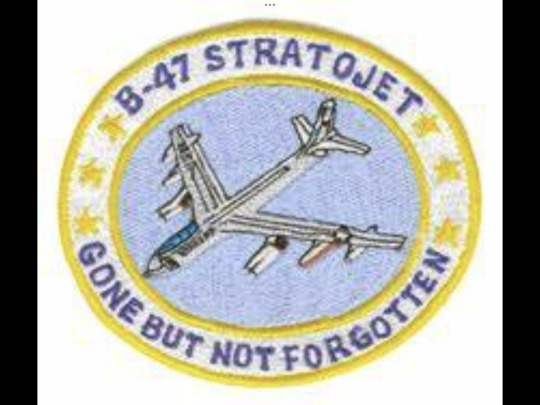
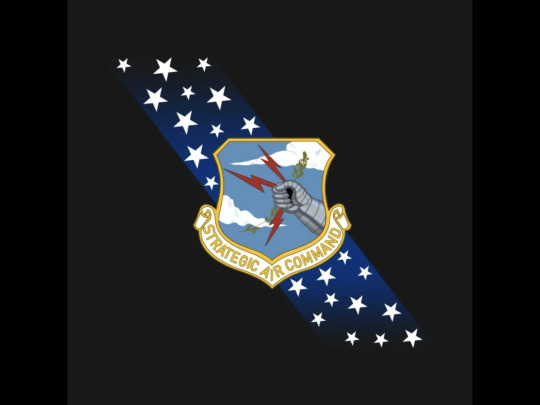
29 notes
·
View notes
Text

Us airforce general curtis le may on his carpetbombing campaign on Japan, but I CANT CONFIRM THIS QUOTE BC internet archive is DOWN i hate this world made by Curtis lemay and HIS GENOCIDAL ILK
1 note
·
View note
Link
Hey, Have you entered the Fresh Fiction giveaway to win Atomic Alarms: Dive into the Cold War with the Mushroom Cloud eBook - A Thomas J. Yeggy Exclusive Giveaway! yet? If you refer friends you get more chances to win :) https://wn.nr/A3bD93T
0 notes
Text
Joke 473
In LeApril, General Curtis LeMay went to Camp LeJeune and left in LeJuly.
0 notes
Text
This Week in History: How JFK Surrendered to a Snickering Khrushchev and Castro
By: Humberto Fontova “The biggest defeat in our nation’s history!” bellowed Air Force Chief of Staff General Curtis LeMay while whacking his fist on his desk upon learning the details of the deal President Kennedy cut with Khrushchev regarding the missiles in Cuba. ‘Aaw come on, Humberto!’ Some amigos retort. ‘Gen. LeMay was a serious war-monger and NUTCASE!—the model for Gen. Ripper in Dr…

View On WordPress
0 notes